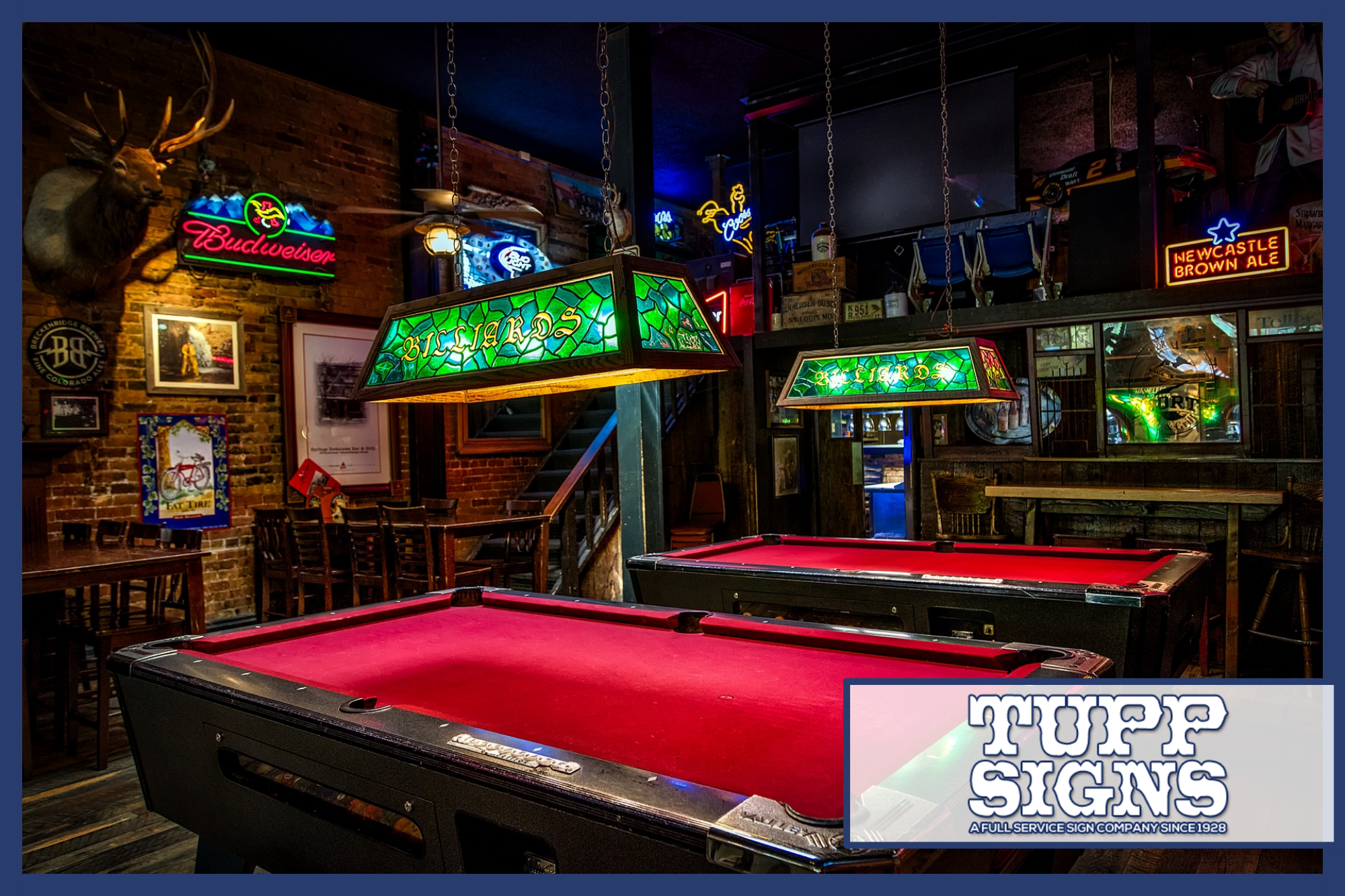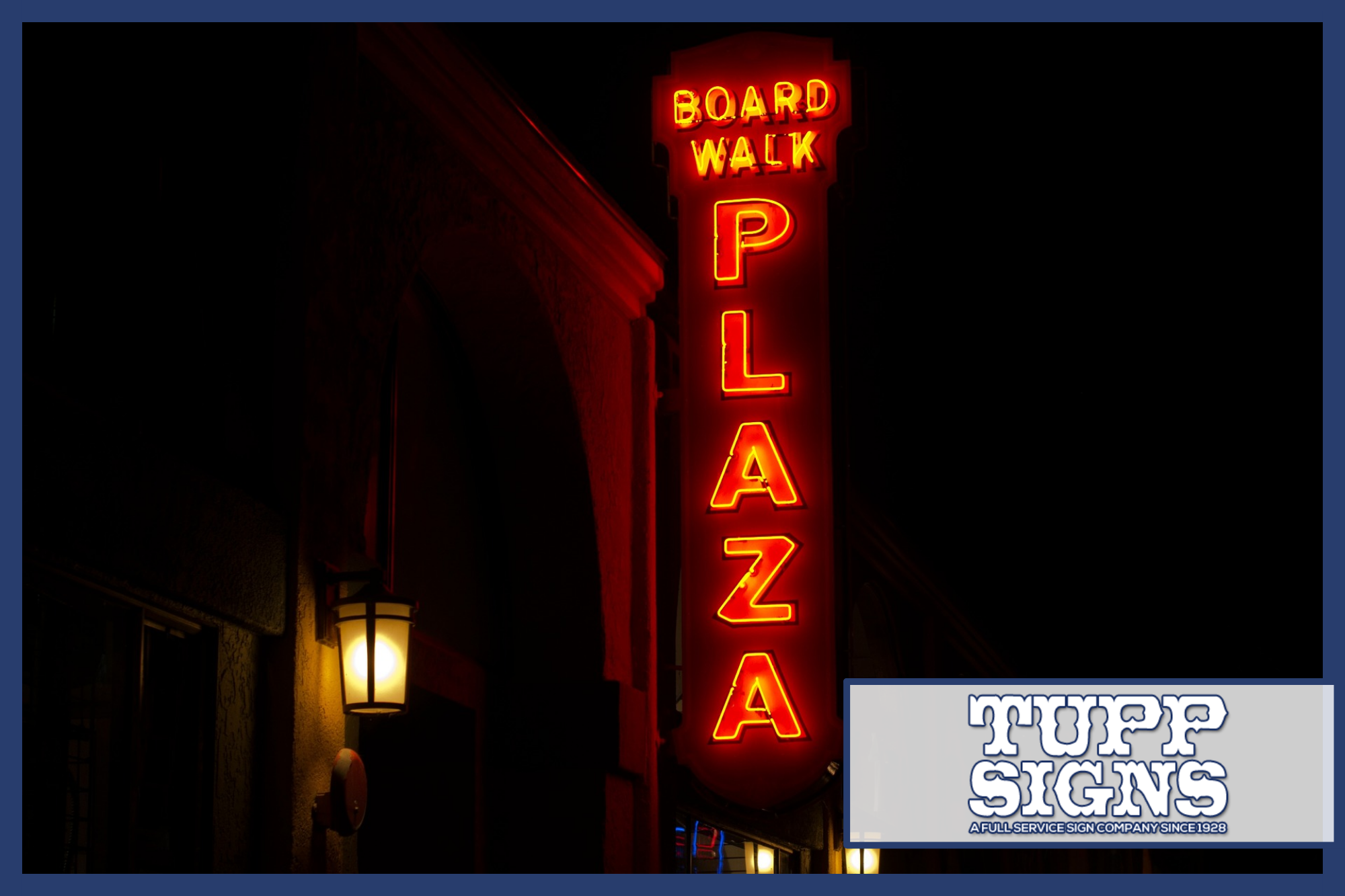Looking to save some money on operating costs for your facility or business? Want to be more eco-friendly? You might be considering swapping over to greener energy, but the thought of changing everything over is dreadful. No one wants to tear apart their facility for an upgrade. The good news is that you don’t have to—not when you can get your lighting fixtures and business signage retrofitted with LEDs.
Here is everything you need to know about retrofitted LED lighting, including the advantages and challenges you need to consider.
What Is Retrofitting?
Retrofitting is done in many industries, from engineering to electricity. Retrofitting is defined as adding a newer technology to existing technology to make the system function more properly. So, if we are looking at retrofitting lighting or business signage, it would mean converting the outdated lighting fixtures, like fluorescent or CFLs, to cleaner technology, such as LEDs.
From an economic perspective, retrofitting means that you do not have to tear down all the lighting in your warehouse or replace all the signage you have installed. This can save both time and money.
The Benefits Of LED Retrofitting
As mentioned above, when you retrofit your lighting fixtures and business signage, you are losing nothing out of the deal. You are merely swapping out an obsolete technology for a more efficient one. Naturally, this comes with additional benefits:
- Reduced maintenance cost. LED lighting requires far less maintenance and repairs than other bulbs.
- Longer lifespan. Did you know that LED lights operate 2-4 times longer than metal halide, sodium vapor, and fluorescent light bulbs? It’s true! The average lifespan of an LED light is between 50,000-100,000 hours. You can also run LED lights constantly and use far less energy than the competition during that lifespan.
- Safety. Because LED lights emit little to no heat, they are safer than traditional light bulbs. Fluorescent lights, for example, transform 90 percent of the energy they produce into heat, whereas LED bulbs consume less power to generate far more light.
- Dimming features. You can set LED lights to operate at 0-100 percent brightness. While you will need some additional hardware to do this, it is yet another advantage over traditional forms of lighting.
- Unidirectional emissions. Other forms of lighting will emit light at a full 360-degrees. You may think that is a better route, but all it does is make traditional lighting less efficient. It also consumes more energy. On the other hand, LED bulbs only emit light at 180 degrees.
- No UV emissions. Adding to the safety of LED lights, the light they emit contains little to no energy on the UV spectrum. Most of the light is harmless—from the visible spectrum.
- No temperature sensitivities. Some types of lighting are sensitive to the cold. When you retrofit your lighting to LED, you get a source of illumination that operates the same no matter the temperature. This will be a boon in the unpredictable winter months.
- Higher energy efficiency. When you retrofit your lighting and illuminated signage to LED, you will see a 75-90 percent increase in the overall efficiency of your business or building.
- No lagging. LED lights turn on at the flick of a switch and do not need to warm up.
- Environmentally-friendly. LED retrofit signs and lights are much cleaner because they do not contain any mercury or harsh chemicals, unlike mercury and fluorescent lighting.
Challenges Of Retrofitted LED Lighting
Now that you have had a look at the benefits of retrofitted LED lights, we need to touch on the disadvantages or challenges that await you. Although the process of retrofitting is relatively easy, the actual application can be difficult. Here are some of the challenges unique to retrofit LED lights:
Fixtures Come In Different Sizes And Shapes
You may have noticed that throughout the years the size of fixtures for lights, lamps, and signs has changed. For instance, if you have some lighting fixtures that take a 10 ft long fluorescent tube, you won’t find 10 ft long linear LED tubes that match. That means that the retrofit is going to need LED tubing customized to fit.
 Signs Are Not The Same Size
Signs Are Not The Same Size
Just one look at the signage around your location—or multiple business locations—will tell you of the challenge that awaits. Rarely does a business have signage all the same size. No, you have various designs both large and small. Or, you repaired or rebranded some signs while others were left alone. This disparity in sizes with affect the way your signs are retrofit, and that can be a timely process.
Various Grades Exist
Signs and lighting fixtures with different grades pose a unique problem during retrofitting. Let’s say you have 10 signs that have a 10 ft grade and another 20 signs at a 35 ft grade. The contractor will need a different set of tools for both sets of signs. As with the other two challenges, this could set the turnaround time for the retrofitting back or even delay the start time.
How To Eliminate These Challenges
Fortunately, there is a way to circumvent these challenges. The first route is to be transparent about the lighting and signage at your location. Let the sign professionals know everything they need. You may also want to do a site survey of everything location requiring a retrofit. That will streamline the planning and make the process that much quicker.
Next, communicate with the business sign company or lighting technician working on the retrofit. If you have questions or concerns, don’t hesitate to ask.
Conclusion
Interested in making a change for cleaner, safer, more efficient energy? Then LED retrofitting could be for you. Keep in mind that there are some challenges involved. But most of the time, any lighting fixture can be retrofit and upgraded to LEDs.
If you have any questions, give us a call? The technicians at Tupp Signs have plenty of experience in retrofitting, and our representatives are always ready to answer your questions. You can also get in touch with us by filling out the contact form!


